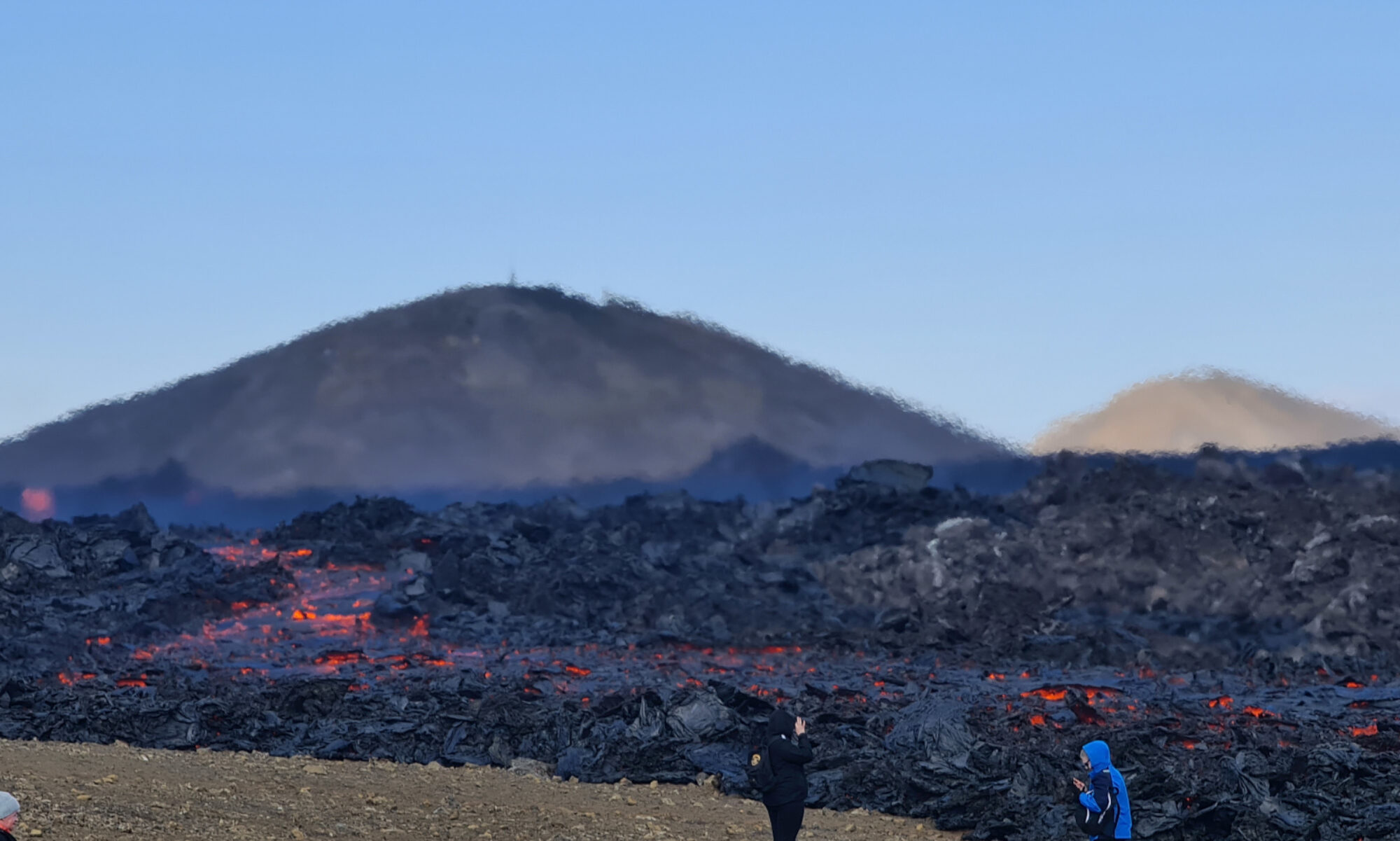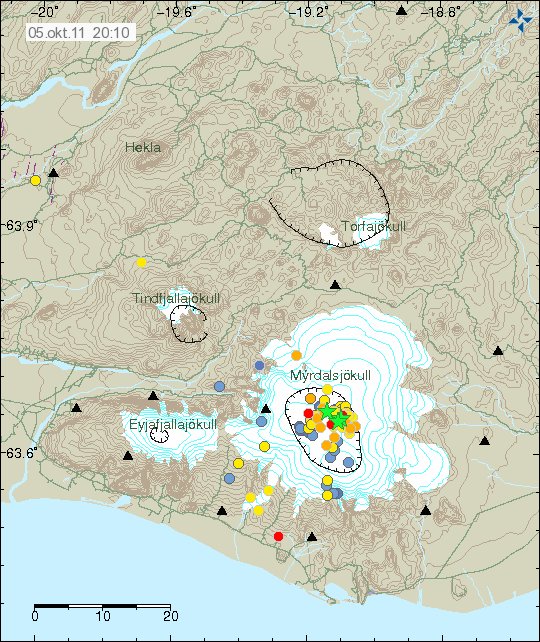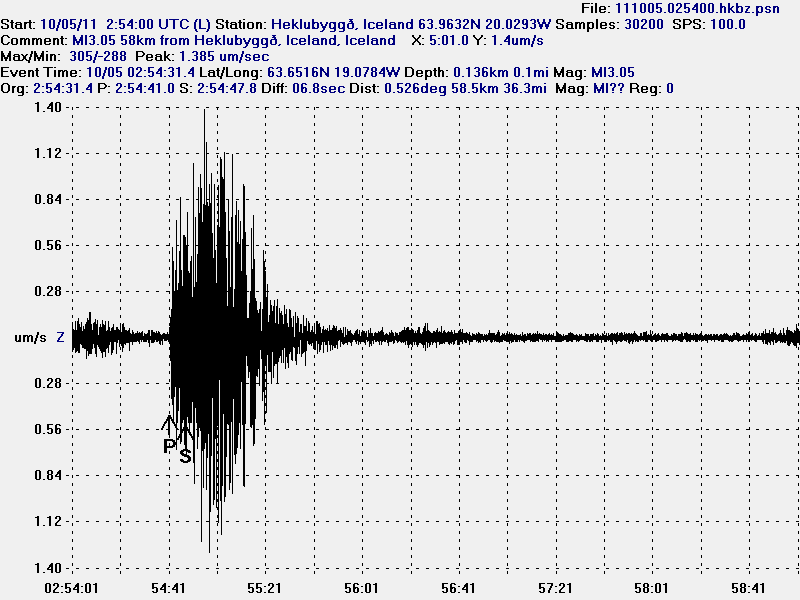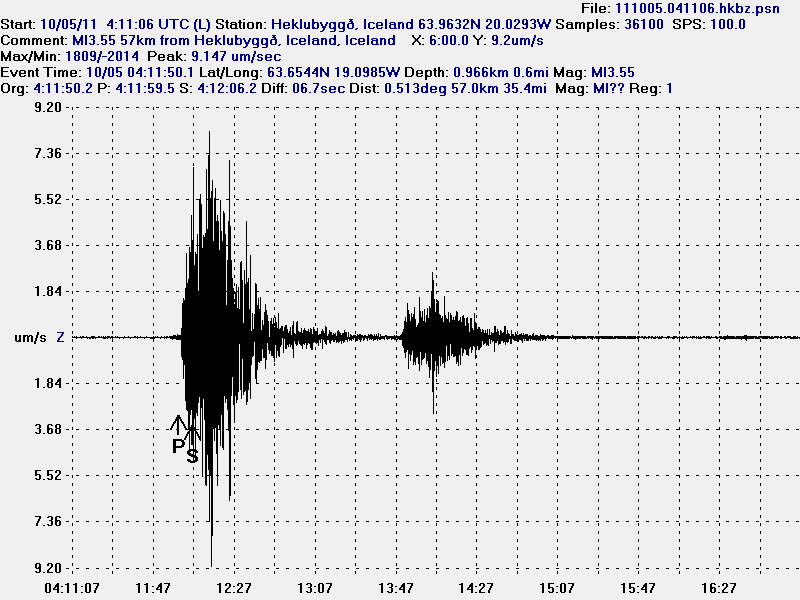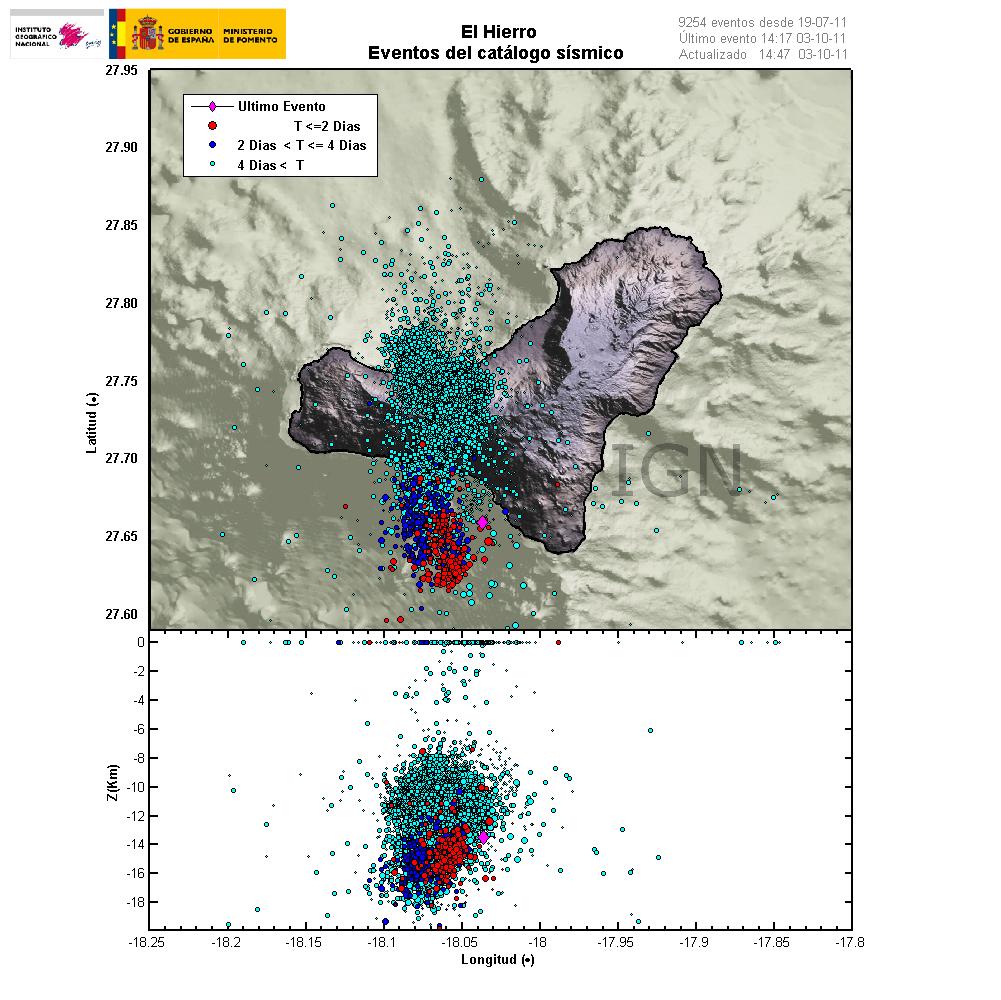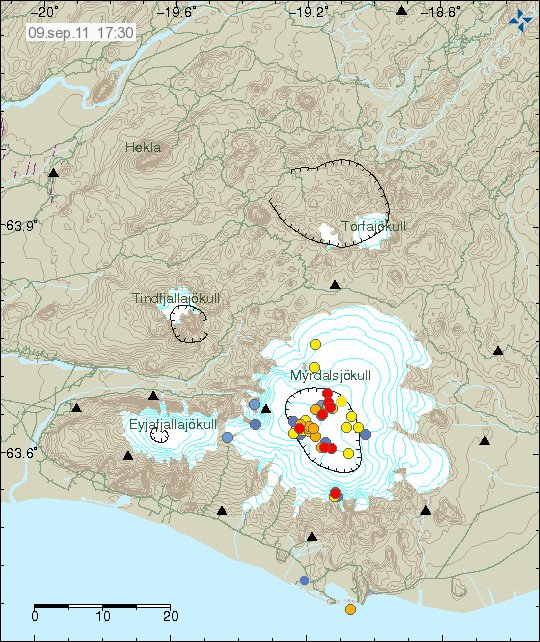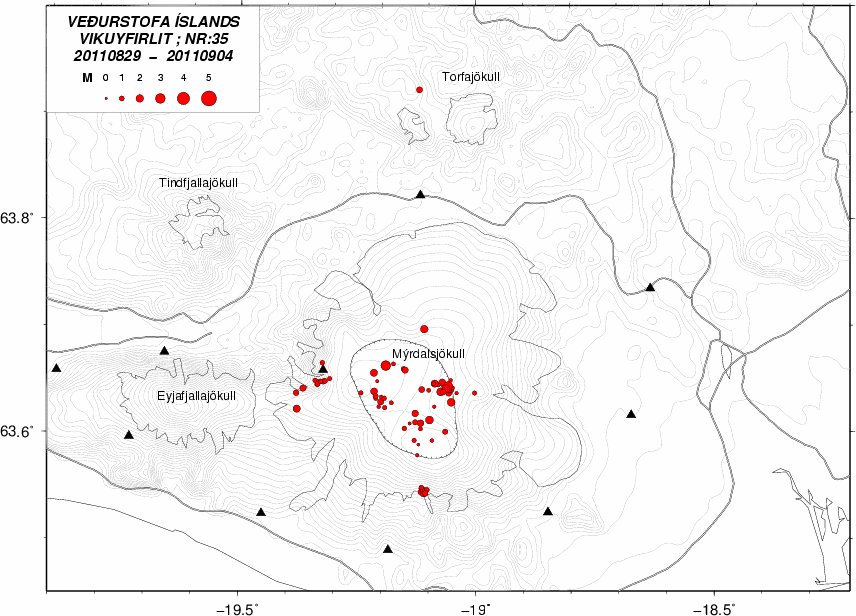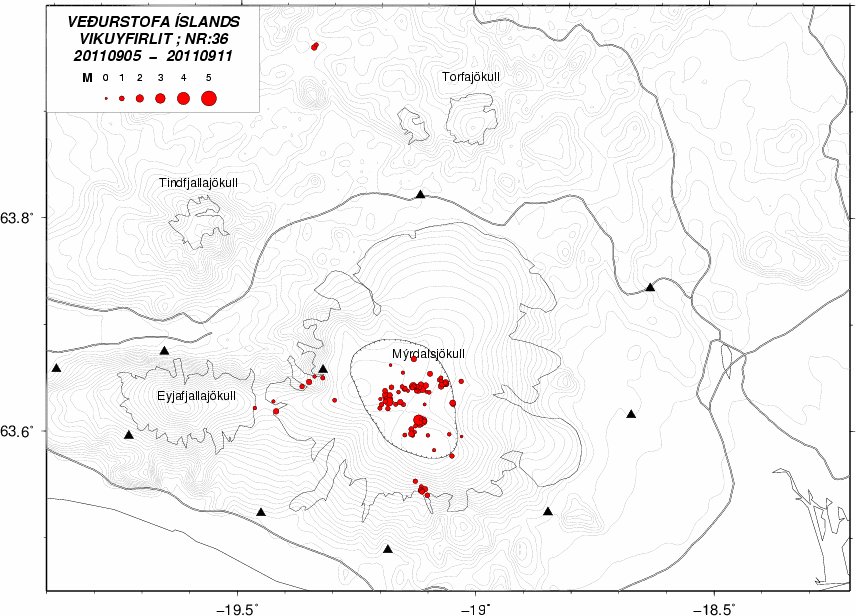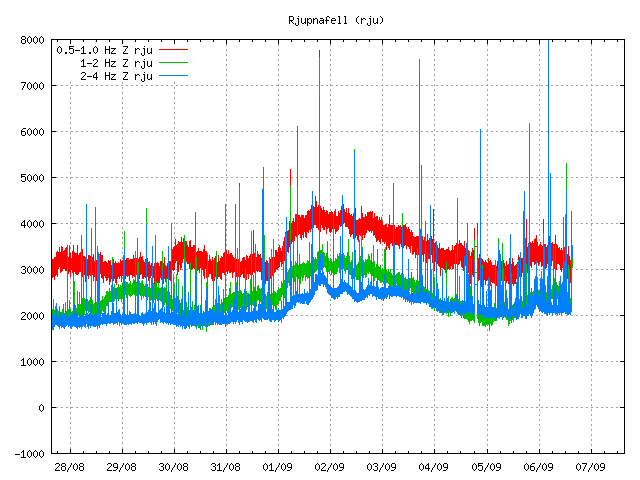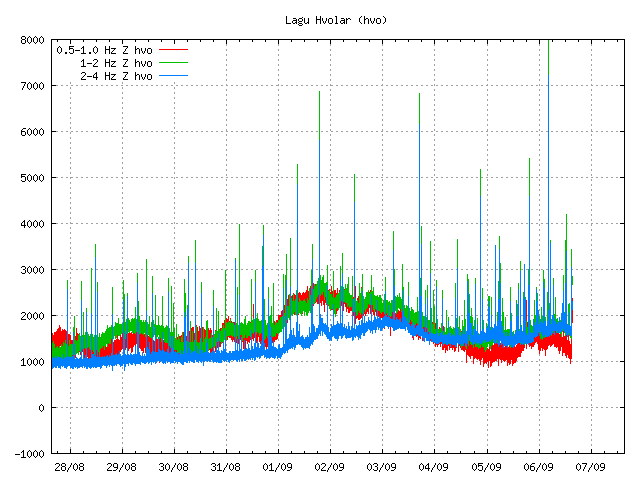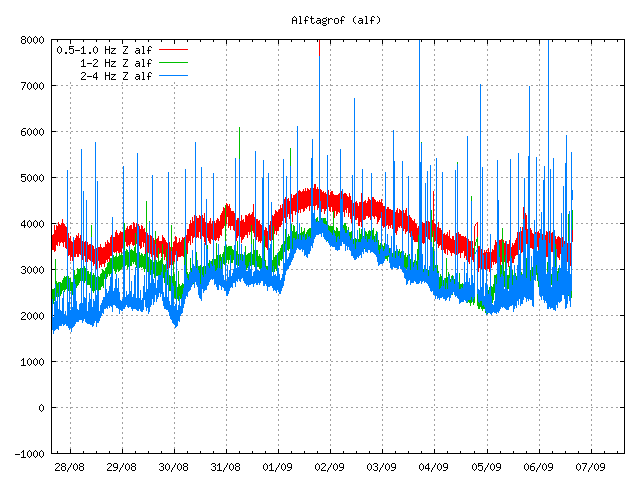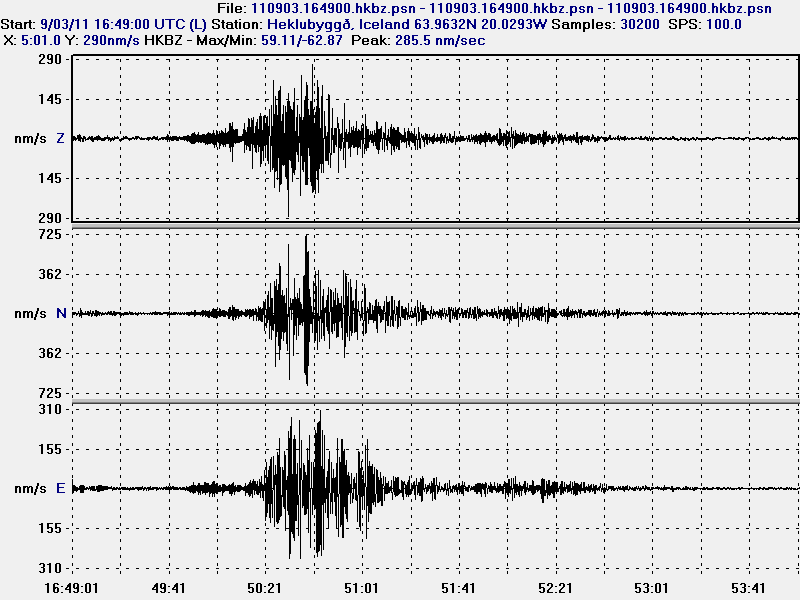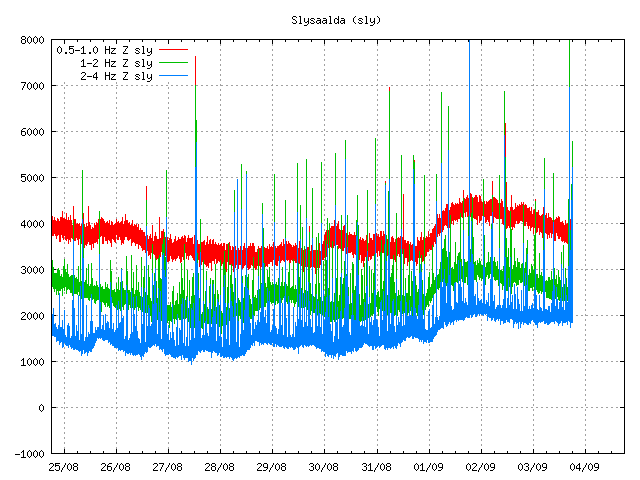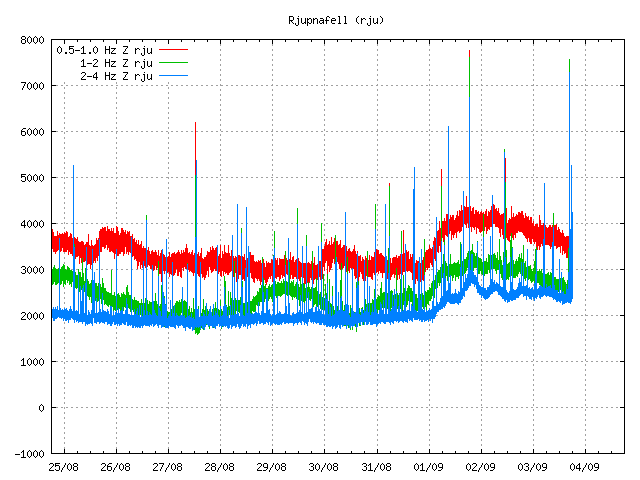While everything is quiet in Iceland. I am going to continue my coverage of the eruption in El Hierro volcano. Information in English also seems to be lacking for some reason. Please note that I have little understanding of Spanish, so I am just using the data that is available to me on the internet to figure out what is going on.
First I want to say that I am not a expert. I never claim to be one. My knowledge of volcanoes and earthquakes are the result of hard work and studying them on my own (reading research papers and other sources).
It is bit unclear what is going on in El Hierro. But from what I can tell least two things have happened during the past 24 hours. The first thing is that a eruption started at ocean floor around 04:18 UTC yesterday (10 October, 2011). This eruption appears to have been small and was not noticed on the surface of the ocean. Around 06:10 UTC this morning (11 October, 2011) a large movement of magma started to take place inside El Hierro volcano. Where exact break up of this magma is going to take place is unclear at the moment. But it is clear that a eruption is taking place and it is more chance then less that magma is going to find it self a new pathway up to the surface soon. As I do not think that the current eruption vent is keeping up with the current magma that is under El Hierro. But it is worth to notice that El Hierro does not seem to have a magma chamber, like Eyjafjallajökull volcano in Iceland so the eruption size is terminated by the current inflow of magma.
Here is a comparison of harmonic tremor charts from yesterday and today (10 and 11 October, 2011).

The harmonic tremor as it was on 10 October, 2011 at 21:08 UTC. Copyright of this picture belongs to Instituto Geográfico Nacional.
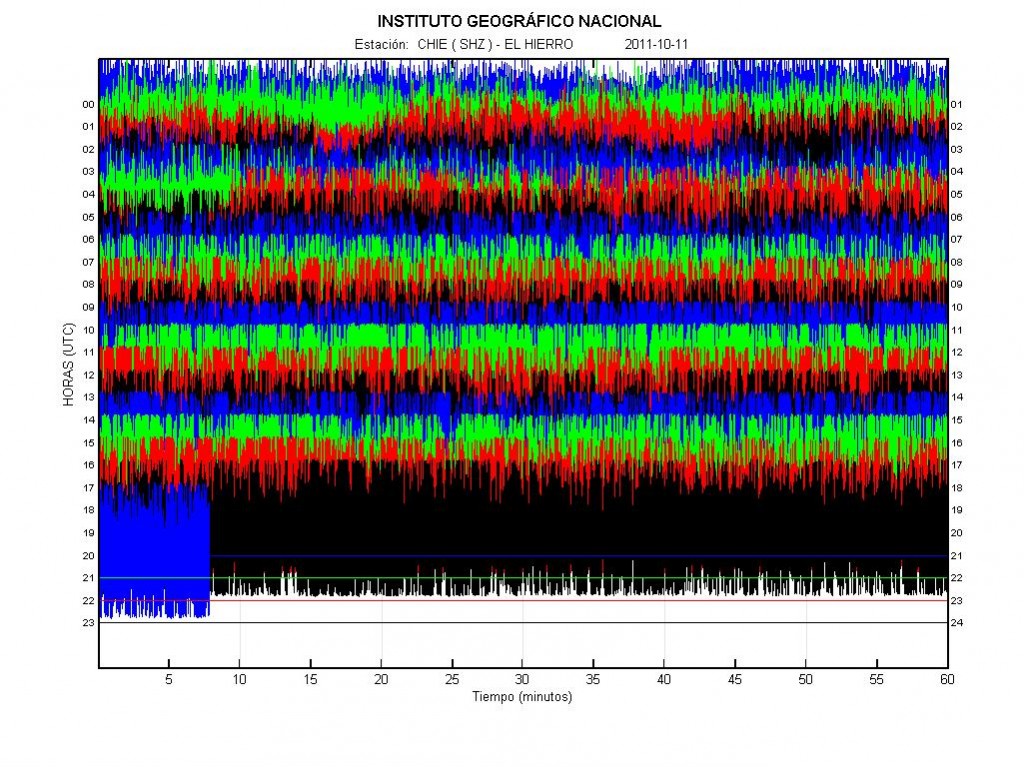
The harmonic tremor as it was on 11 October, 2011 at 20:29 UTC. As clearly can be seen it has grown by a margin or more (I can’t tell for sure) in the last few hours. Copyright of this picture belongs to Instituto Geográfico Nacional.
What is however really interesting is how this eruption is changing fast and without any warning at all. But this is however something that might be expected from a volcano like El Hierro. I see in the news that they are expecting earthquake activity before new vents or fissures open up. That is wrong assessment in my opinion. As new eruption vents and fissures can open without any or much earthquakes activity at all. Earthquake activity before a fissure vents open up depends only on the rock that the magma has to break trough. In many cases it does not have to create any earthquakes before a eruption starts. Good example of this is the eruption in Heimaey Island in the year 1973. Only a small earthquake swarm was detected before a eruption started. All I personally except before a eruption in a new place on El Hierro volcano is a minor earthquake activity. It is also hard to know if that earthquake activity can be detected based on the amount of harmonic tremor taking place at the moment.
Here is my personal assessment on where eruption might take place in El Hierro. Please note that it might be completely wrong. But I base my assessment on the data out there, that assessment might be wrong.
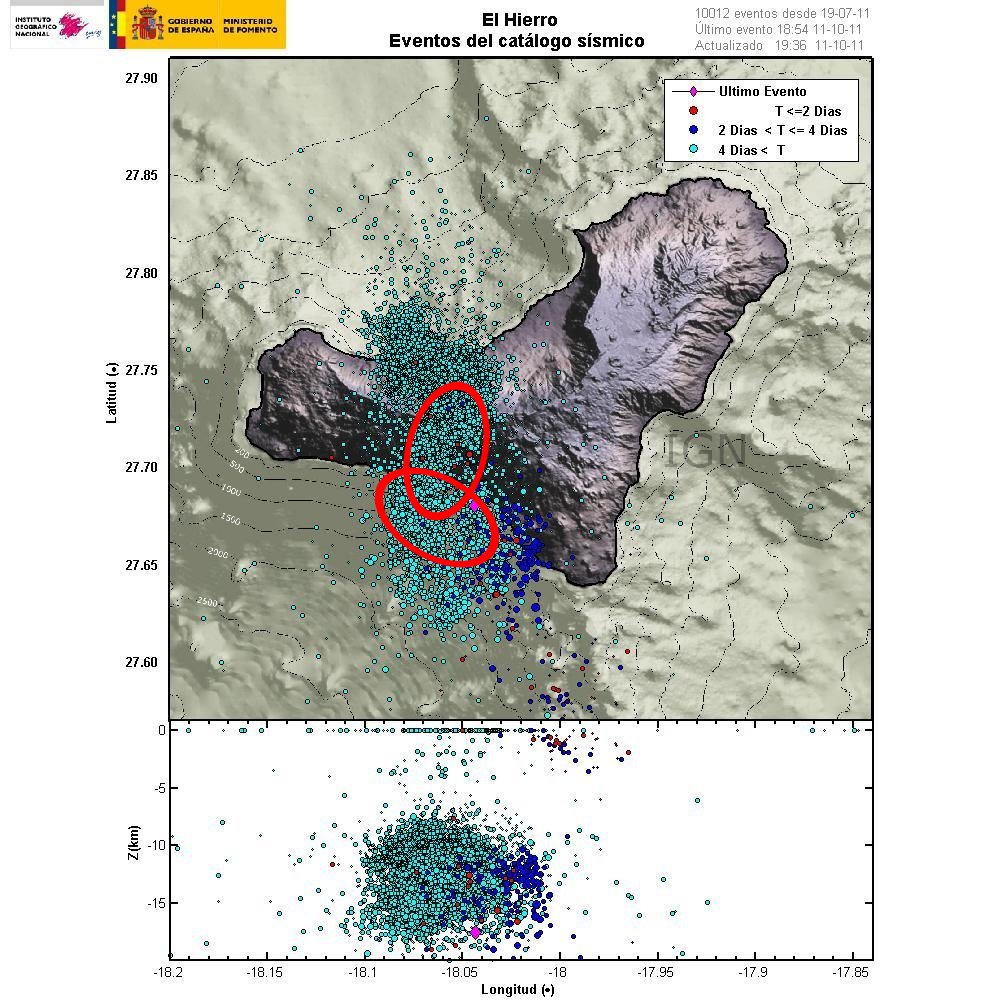
The most chance of the eruption in El Hierro in my personal opinion marked by the two red circles. Copyright of this picture belongs (original) to Instituto Geográfico Nacional.
There have been some deep earthquakes in El Hierro volcano over the past few hours. This deep earthquakes mean that new magma is flowing under El Hierro volcano. This means that the flow is steady (pressure pulse in the magma creates the earthquakes). So this eruption is far from being over it seems. How long it is going to last is a good question that currently nobody has a answer to at the moment.
I am going to update this blog post if I have to or if something new happens in El Hierro.
